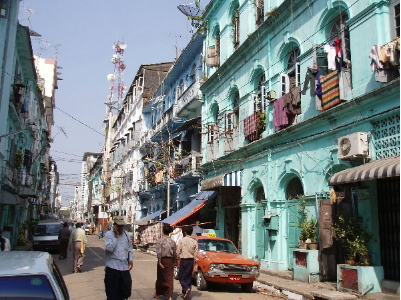| Myanmar's capital has several important sights and a few very pretty
areas, but generally I wouldn't recommend it as a highlight. A few
days in the capital is sufficient for changing money, making onward
travel plans and seeing the more important temples. A visit to the
market is also advisable, as this is probably the most comprehensive
shopping you'll find in the country. |
| |
|
|
| Pictured on the left is Sule Paya, a busy temple in the centre of
downtown Yangon. Below is the nearby Mahabandoola Gardens. |
| |
|
|
| Yangon's streets (aside from the main thoroughfares) are generally
quiet and provide you with an easy glimpse of life in the city. Every
street has a local tea shop serving sweet tea and Indian or Chinese
snacks. These are great spots for breakfast and also for people watching. |
|
 |
|
| For lack of a teashop photo from Yangon, here is a photo
from the Shan State. It actually looks nothing like in the capital,
as in this chilly hill station people wear knit caps and also men
of Shan ethnicity tend to wear trousers instead of sarongs. |
|
|
|
|
|
|
| |
The Shwedagon Paya is the most sacred Buddhist
temple in Myanmar. It is a sprawling complex of towering zedi, mythical
creatures and intricate gold-work. The main stupa is incrusted with
over 5000 diamonds, one weighing 76 carats, not to mention other
precious jewels. And of course it is covered with gold plates. Unfortunately
the main zedi is not pictured here, as it was under construction
at the time of our visit. |
| |
|
|